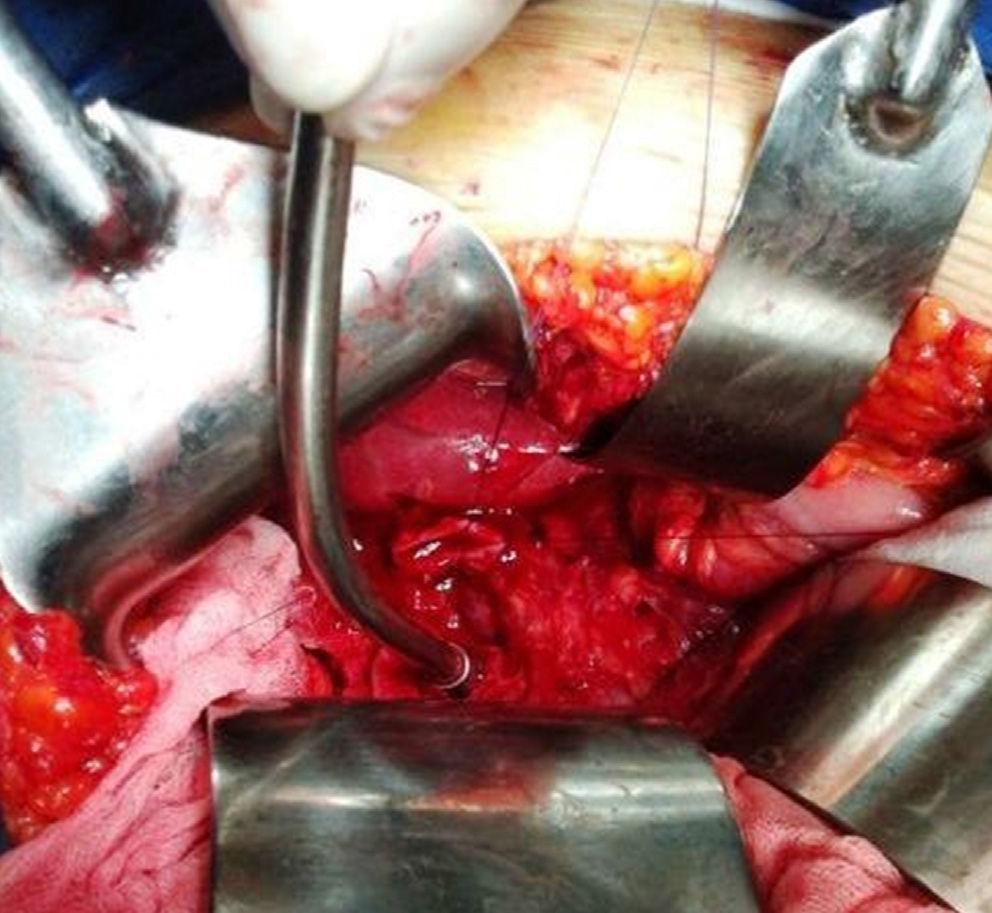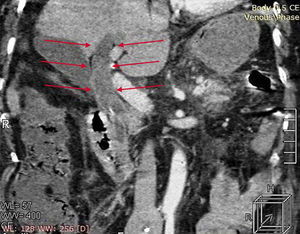The clinical importance of biliary tract calculi is in their association with cholangitis and acute pancreatitis. Endoscopic retrograde cholangiopancreatography (ERCP) is regarded as the safest and most successful therapeutic method for extracting stones from the common bile duct. Nevertheless, large or impacted calculi that take up the entire bile duct are a therapeutic challenge. A bile duct calculus is defined as large when it is bigger than 10-15mm. There are very few reports describing a single giant calculus (> 5cm) in the common bile duct. We describe herein a 58-year-old woman that presented with severe acute pancreatitis. Tomography findings included a stone impacted in the bile duct, dilation of the bile ducts, and cholelithiasis (fig. 1). ERCP revealed a giant stone in the common bile duct that occupied the space up to the confluence of the hepatic ducts (fig. 2). The patient underwent a conventional cholescystectomy with bile duct exploration and a Roux-en-Y hepaticojejunal anastomosis, extracting a 7 x 2cm staghorn calculus (figs. 3 and 4). The patient was released from the hospital with no complications. She is asymptomatic 6 months after surgery and her liver function tests are normal.
No financial support was received in relation to this article.
Conflict of interestThe authors declare that there is no conflict of interest.
Please cite this article as: Martinez-Mier G, Avila-Mercado O, Irisson-Mora S. Litiasis coraliforme gigante en la vía biliar. Revista de Gastroenterología de México. 2014;79:200–201.











